Eliminate the Potato Beetle | Remedies and Ecological Treatment

Here is one more post from the «Pests and diseases» category on how to eliminate pests in the organic garden. In this case we will talk about the potato beetle: characteristics of the pest, what plants they eat and what damage the beetles do (which, in addition to potato plants, can affect other solanaceous plants such as eggplant or tomato) and how to prevent and combat the potato beetle with ecological treatments.
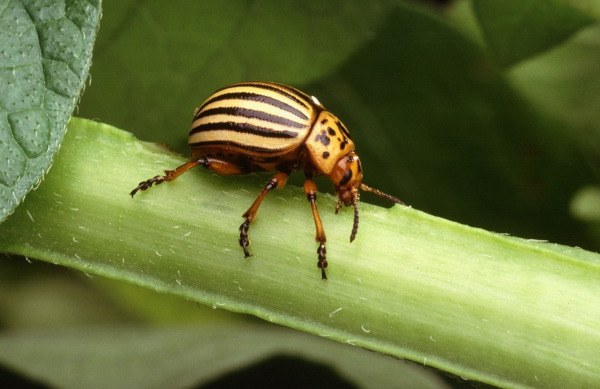
What is potato beetle?
The potato beetle (Leptinotarsa decemlineata) is a beetle that measures approximately 1 centimeter in length. The adult individual is practically unmistakable due to its striking colors: it is a yellow beetle with longitudinal black stripes on the wings. In addition, it can also be recognized because it has black spots on its head (which is usually yellowish or orange, like the inside of the abdomen).
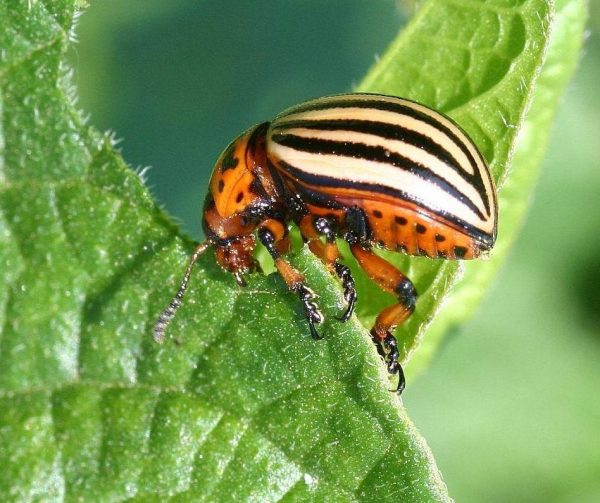
Beetles lay eggs on the underside of leaves. A single female can lay up to 2000 eggs per clutch, although they are usually divided into several leaves (in groups of about 20-25 eggs). They are orange, elongated eggs on leaves, and the larvae that emerge from them have a fairly large, arched abdomen and are reddish-brown in color.
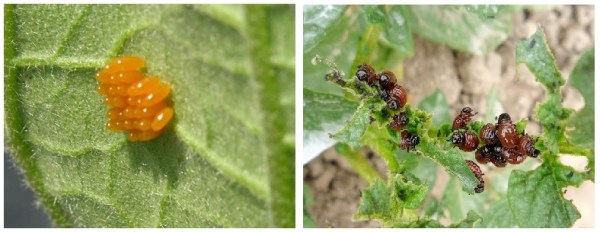
When the larvae hatch they hatch from the eggs starving to death, making the larval stage the most dangerous. Beetle larvae are extremely voracious and can cause significant damage, even completely ruining the crop, so you must be careful and try to control the pest as soon as possible.
What do potato beetles eat? Affected crops
The potato beetle attacks mainly potato, eggplant and tomato plants. They are plants of the same family – Solanaceae – so remember that you should not put these plants together, because the effect of the pests will multiply.
The main damage is bitten leaves on the plants (or even totally devoured leaves if the pest has already developed enough). This pest is one of the most destructive in potato cultivation and, in addition, it can transmit serious diseases to Solanaceae, such as potato rot, caused by the bacterium Pseudomonas solanacerum.
How to prevent a potato beetle infestation?
The potato beetle is a fairly resistant pest, it reproduces very quickly and is very voracious, so the most important thing is PREVENTION, EARLY DETECTION and SPEED IN ITS ELIMINATION.
As we already saw in the post on the Integrated fight for pest control, the main thing to control insects without phytosanitary products is the use of several different methods (physical barriers, traps, natural enemies, beneficial associations, natural insecticides…).
Ecological Methods to Prevent Potato Beetle
- Crop inspection: It is important to constantly monitor crops that may be affected by a beetle infestation, to detect these insects and eliminate them before they become a pest.
- Crop rotation: moving crops in successive years is essential to prevent potato beetle infestation.
- Companion Crops: Plant potato beetle -repellent plants such as marigolds, sage, or radishes next to potato plants and other nightshades.
- Weed control so that they do not serve as a refuge for beetles and early detection is facilitated.
- Straw cover or other type of mulch for orchards: if placed around the crop it will make it more difficult for beetles to reach the plant. The leaves of yours (a conifer) also have a repellent effect on the pest.
Crop rotations and associations to prevent beetle infestation
If we have already suffered a potato beetle infestation, its appearance must be prevented during the following season.
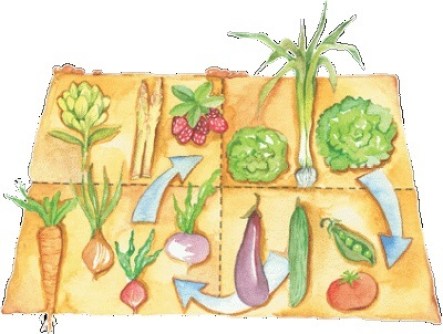
When the harvest arrives and we remove the plants, the potato beetle takes refuge in the soil to spend the cold seasons hibernating as a pupa. In spring or early summer, the beetles re-emerge en masse, already as adults, to lay their eggs on the leaves of the plant. This means that if a plague of beetles has attacked our plants and the following year we plant potatoes or aubergines again in the same place, there is a good chance that the plague will continue to affect the plants in the garden. Conclusion: crops must be rotated so that the beetle does not find «a home to suit» the following year.
In addition, to prevent beetle infestation, you should not put “incompatible” plants together, such as plants from the same family (tomato, pepper, aubergine, potato…) or from the same type of use (fruit, in this case). Also avoid putting pumpkins, zucchini or cucumbers next to potato plants.
Pair potatoes and other nightshades with compatible plants: legumes, leafy vegetables and root vegetables such as carrots (a highly recommended crop as it repels the potato beetle).
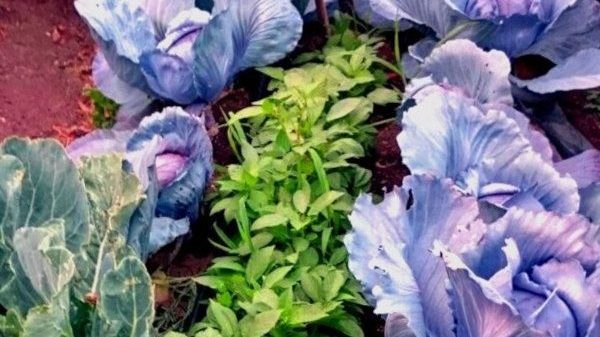
In addition, there are some intercrops that go very well with Solanaceae to prevent the appearance of the potato beetle, such as horseradish or sage, which also have a repellent effect against this pest.
Ecological Remedies to Eliminate Potato Beetle
- Manual removal of both adults and larvae and leaves that have yellow eggs.
- Release of natural enemies of the potato beetle, such as hedgehogs, toads, chickens or ladybugs that will feed on the beetles.
- Biological control of pests with ecological insecticides for beetles prepared from entomopathogenic fungi such as Beauveria decemlineata and Bacillus thuringiensis, which infect beetles and cause their death,
- Insecticides for the potato beetle: Neem extract or Azadirachtin and Spinosad, a natural insecticide allowed in organic farming.
I hope I have been of help to you if you have a potato beetle infestation in your garden.
I encourage you that if you have a problem with a specific pest that we have not yet discussed in this category or if you detect any symptom that you do not identify, you should raise it in the comments (photos can also be attached) or on our Facebook page. Surely among all we can solve the doubts!
References
- Samšiňákovás, A. et al., 1981. Mass production of Beauveria bassiana for regulation of Leptinotarsa decemlineata populations. Journal of Invertebrate Pathology, vol. 38 (2), p. 169-174.
- Jacques, R., 2000. Potato beetles. DPI Entomology Circular 271. University of Florida.
- FAO, 2008. Potato pest and disease management.
- Kowalska, J., 2010. Spinosad effectively controls Colorado potato beetle, Leptinotarsa decemlineata (Coleoptera: Chrysomelidae) in organic potato. Acta Agriculturae Scandinavica, Section B — Soil & Plant Science, vol. 60 (3), p. 283-286.
- Martín Gil, A. & Alonso Arce, F., 2015. Integrated Pest Management Guide for Potato cultivation. Publisher: Ministry of Agriculture, Food and Environment (Government of Spain).
- López, A., 2019. Control of potato beetle (Leptinotarsa decemlineata) with ecological products. Center for Research and Agrifood Technology of Aragon. Aragon Agrifood Knowledge Exchange Network (RICA),

![Photo of Differences between powdery mildew and mildew: [Effects, Propagation and Treatments]](https://www.complete-gardening.com/wp-content/uploads/2022/08/differences-between-powdery-mildew-and-mildew-effects-propagation-and-treatments-390x220.jpg)
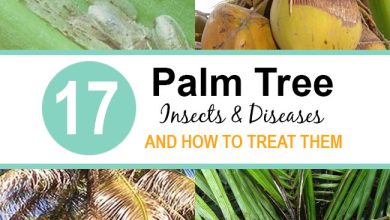

![Photo of Complete Guide on How to Plant Vanilla: [Steps + Images]](https://www.complete-gardening.com/wp-content/uploads/2021/06/el-cultivo-de-vainilla-390x220.jpg)